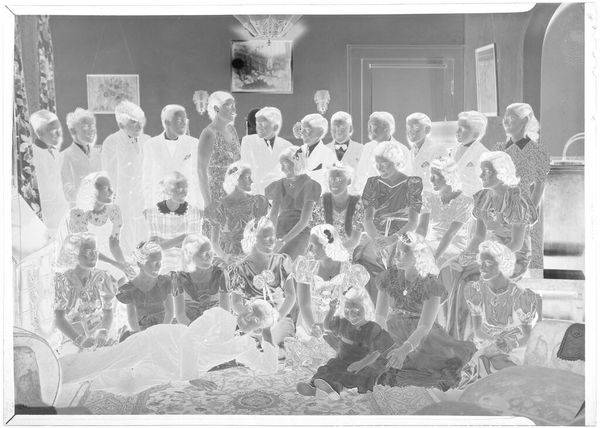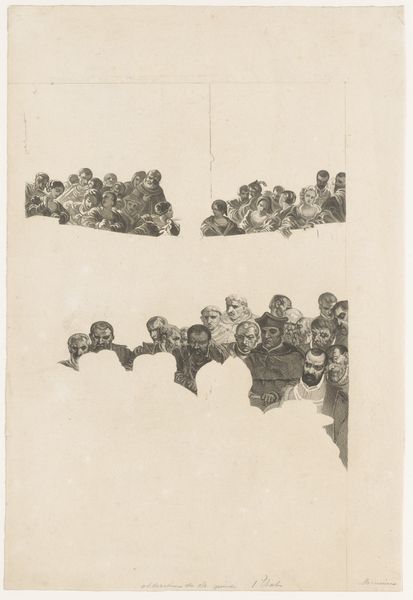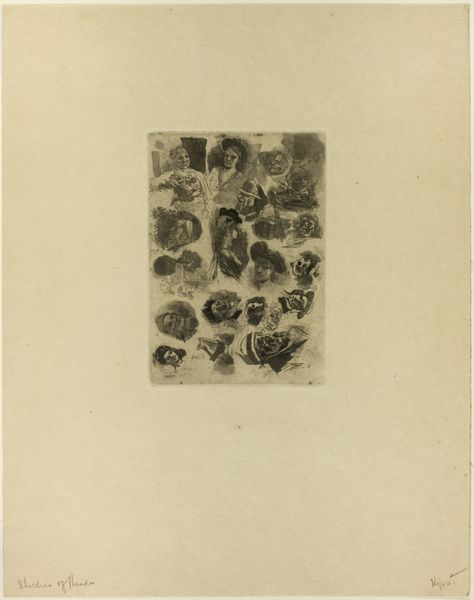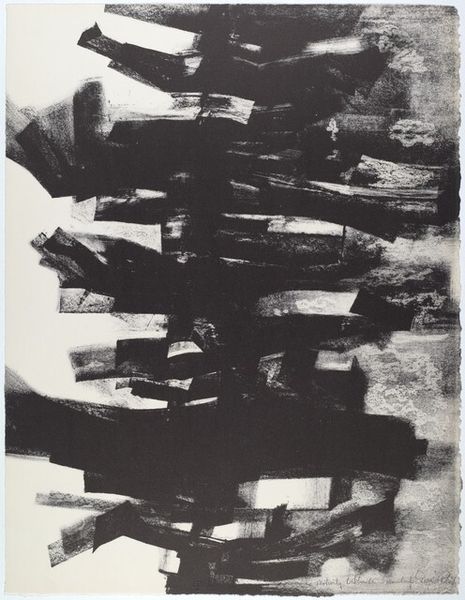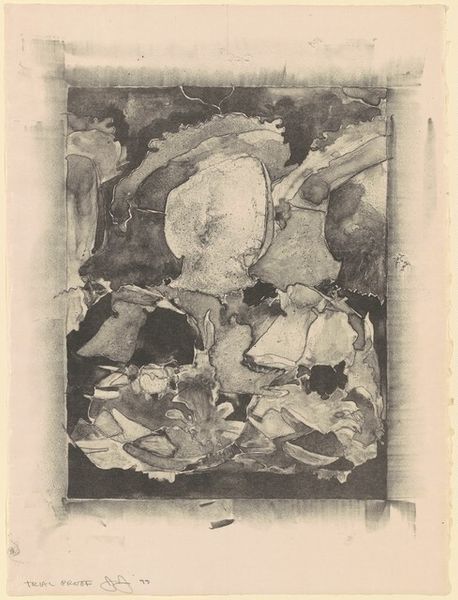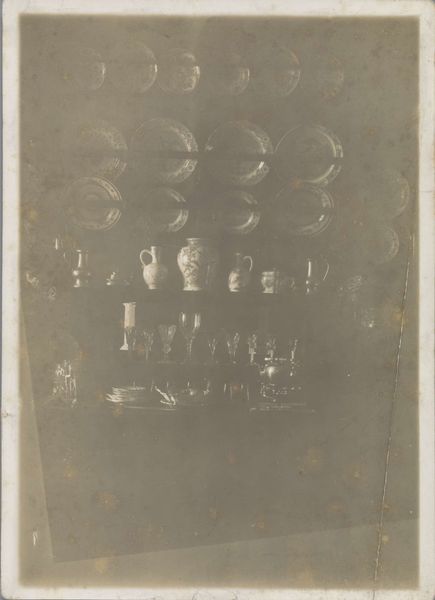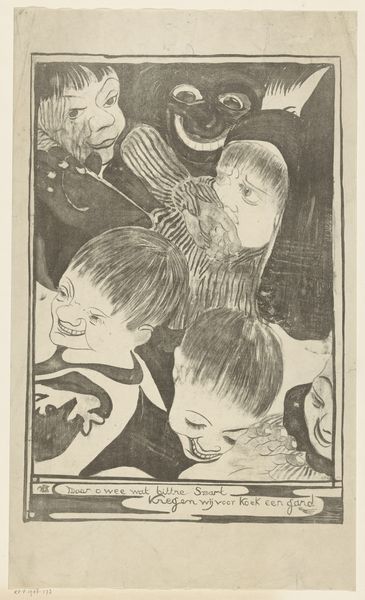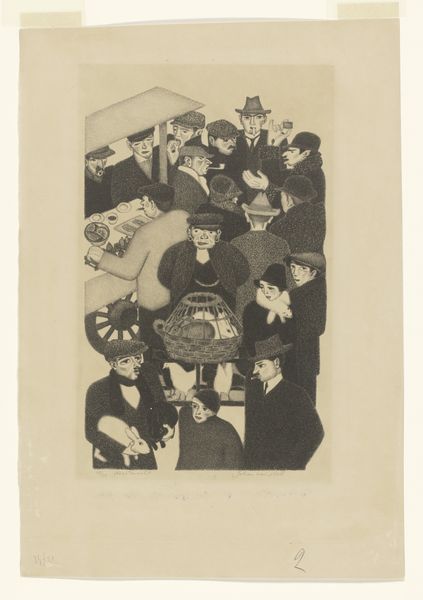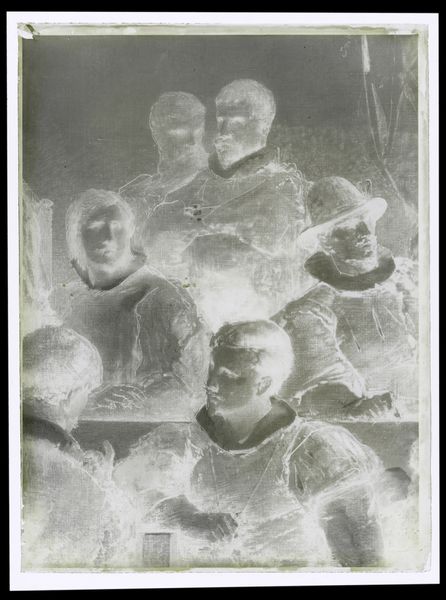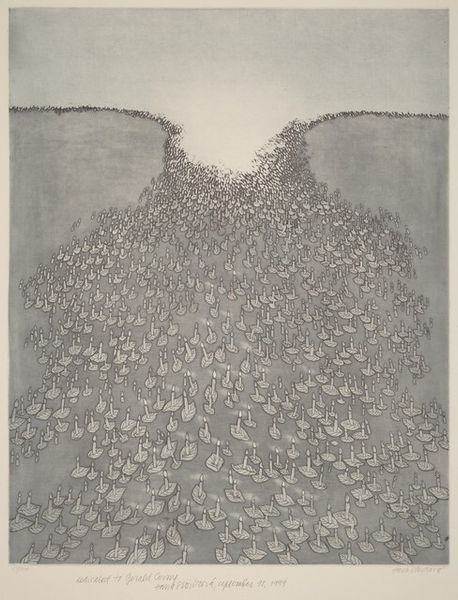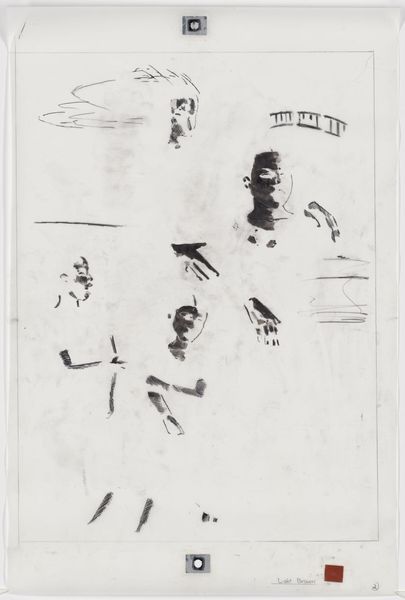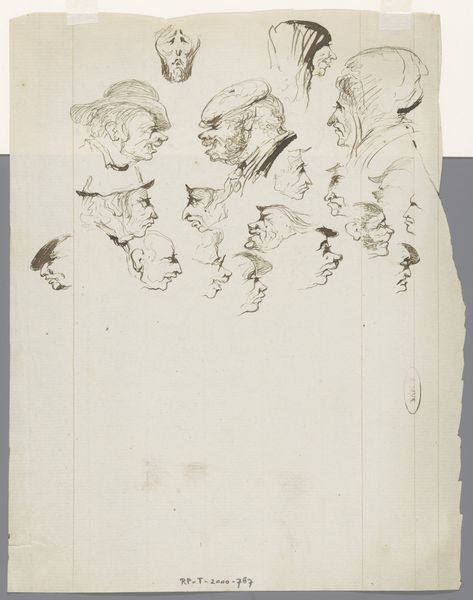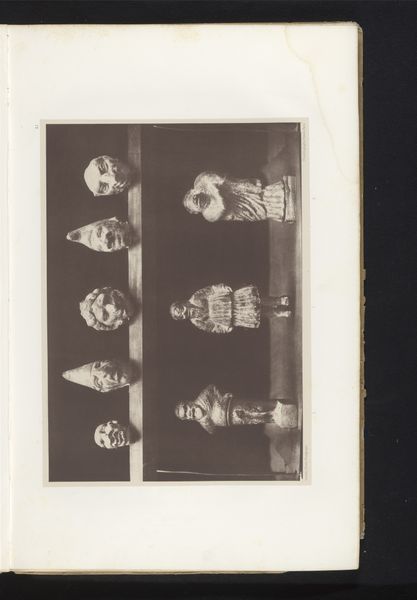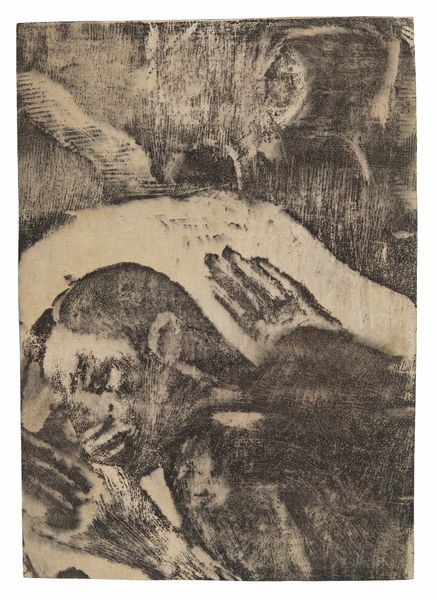
Dimensions: Image: 251 x 202 mm Sheet: 390 x 279 mm
Copyright: National Gallery of Art: CC0 1.0
Curator: We’re standing before Miriam Hadgadya’s "Untitled (Negro Choir)," a print rendered in ink on paper, created in 1935. Editor: It hits you, doesn't it? The sheer volume of those voices feels almost tactile, surging forward from the paper. The monochromatic palette certainly underscores that sense of collective power. Curator: Indeed. Hadgadya, a relatively obscure figure, worked during a time when images of Black Americans were being contested and redefined, especially within artistic movements like the Black Arts Movement. It’s important to consider the public role of such images. How does it position the choir within the socio-political landscape? Editor: Focusing on the material presence of the work itself, I am struck by the artist's mark-making; the texture of the ink creates a shimmering effect on their robes, almost like a wave. And notice how their hands, supporting what I presume is their music, are rendered like precious objects. This, to me, elevates not just the performance but also the labor involved in making that sound. Curator: Precisely! The choir becomes a symbol, imbued with the history of spiritual expression in the Black community. Consider how Hadgadya, as a likely outsider— given her background — interprets and presents this cultural performance. Does she reinforce or challenge existing power structures? Editor: It's the materiality that fascinates me. Ink, paper, printmaking—a medium readily reproducible, and potentially disseminated widely. The choice speaks volumes about accessibility, a deliberate effort, perhaps, to bring this image and its message to a broader audience. Curator: That resonates. It also leads to questions about Hadgadya’s artistic agency, her access to exhibition spaces, and how the image was received during the era. Editor: Ultimately, both the subject matter and its production challenge those traditional art boundaries. The intersection of art and craft becomes evident here when looking closely at the paper grain and the application of the ink and considering the means of production. Curator: An evocative piece, prompting considerations of representation and artistic intention during a period of significant social and artistic change. Editor: Yes, a resonant reminder that the humblest materials, when wielded with intention, can produce something profound and politically charged.
Comments
No comments
Be the first to comment and join the conversation on the ultimate creative platform.
